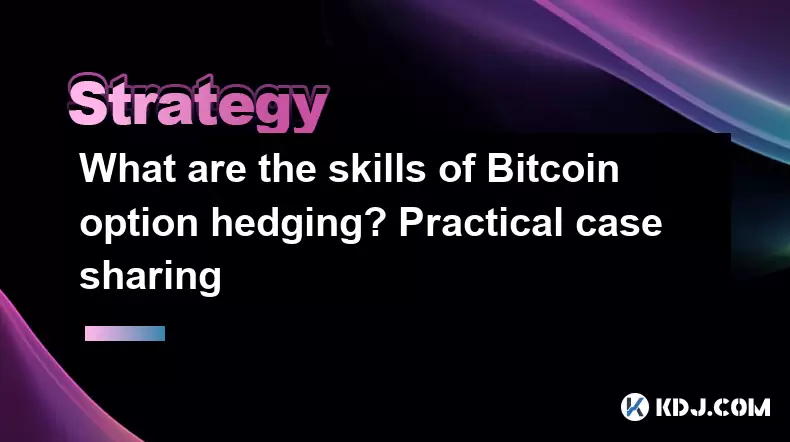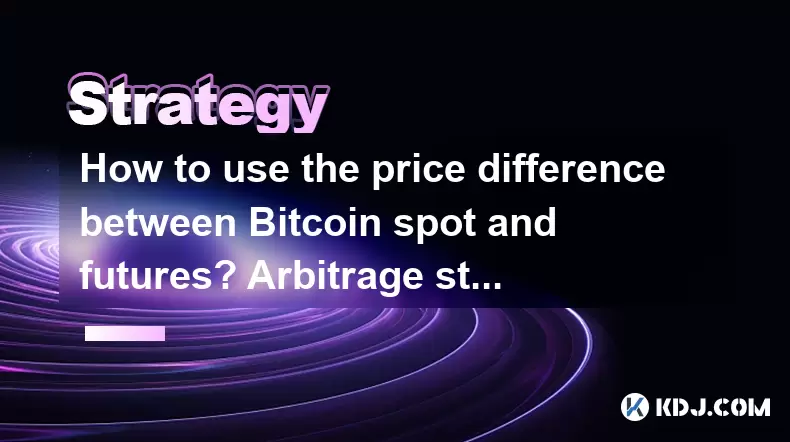-
 Bitcoin
Bitcoin $108,043.3894
-1.71% -
 Ethereum
Ethereum $2,519.1878
-3.09% -
 Tether USDt
Tether USDt $1.0004
-0.01% -
 XRP
XRP $2.2231
-2.72% -
 BNB
BNB $655.3607
-1.06% -
 Solana
Solana $148.3620
-2.84% -
 USDC
USDC $1.0000
0.00% -
 TRON
TRON $0.2838
-0.37% -
 Dogecoin
Dogecoin $0.1648
-4.79% -
 Cardano
Cardano $0.5759
-3.97% -
 Hyperliquid
Hyperliquid $38.4598
-5.19% -
 Sui
Sui $2.9005
-4.22% -
 Bitcoin Cash
Bitcoin Cash $481.1531
-3.80% -
 Chainlink
Chainlink $13.1936
-4.50% -
 UNUS SED LEO
UNUS SED LEO $9.0471
0.41% -
 Avalanche
Avalanche $17.9444
-4.20% -
 Stellar
Stellar $0.2378
-2.60% -
 Toncoin
Toncoin $2.7850
-3.38% -
 Shiba Inu
Shiba Inu $0.0...01148
-3.75% -
 Litecoin
Litecoin $87.3159
-3.73% -
 Hedera
Hedera $0.1557
-3.02% -
 Monero
Monero $314.0980
-1.98% -
 Polkadot
Polkadot $3.3909
-5.10% -
 Dai
Dai $1.0001
0.00% -
 Ethena USDe
Ethena USDe $1.0002
-0.02% -
 Bitget Token
Bitget Token $4.4147
-3.74% -
 Uniswap
Uniswap $6.9933
-9.59% -
 Pepe
Pepe $0.0...09661
-6.72% -
 Aave
Aave $264.1417
-6.16% -
 Pi
Pi $0.4705
-5.23%
Is the choice of trading pairs for Flare (FLR) important? Which is better, BTC or USDT?
Choosing the right trading pair for Flare (FLR) impacts liquidity, volatility, and fees; BTC offers high liquidity but volatility, while USDT provides stability and lower fees.
May 01, 2025 at 09:28 pm

Is the Choice of Trading Pairs for Flare (FLR) Important? Which is Better, BTC or USDT?
Choosing the right trading pair for Flare (FLR) can significantly impact your trading experience and potential profits. The decision between using Bitcoin (BTC) or Tether (USDT) as a trading pair involves understanding the unique characteristics of each option and how they align with your trading strategy. In this article, we will explore the importance of selecting the right trading pair and delve into the specifics of using BTC versus USDT for trading Flare (FLR).
Importance of Choosing the Right Trading Pair
The choice of trading pair is crucial for several reasons. Firstly, it affects the liquidity of the market, which can impact your ability to enter and exit trades efficiently. Secondly, the trading pair you choose can influence the volatility of your trades, as different pairs may experience different levels of price fluctuations. Lastly, the choice of trading pair can affect the fees you pay, as some exchanges may charge different rates for different pairs.
When trading Flare (FLR), it's essential to consider these factors to optimize your trading strategy. Let's examine the pros and cons of using BTC and USDT as trading pairs for Flare (FLR).
Trading Flare (FLR) with Bitcoin (BTC)
Bitcoin (BTC) is the most popular cryptocurrency and is often used as a trading pair for other cryptocurrencies. Here are some advantages and disadvantages of using BTC as a trading pair for Flare (FLR):
Advantages of Using BTC
- High Liquidity: Bitcoin markets generally have high liquidity, which means you can buy and sell Flare (FLR) more easily. This can be beneficial if you need to enter or exit trades quickly.
- Volatility: Bitcoin is known for its volatility, which can present opportunities for traders looking to capitalize on price movements. If you are comfortable with higher risk, trading Flare (FLR) against BTC can be advantageous.
- Broader Market Exposure: Trading Flare (FLR) against BTC allows you to gain exposure to the broader cryptocurrency market, as Bitcoin's price movements can influence the entire crypto market.
Disadvantages of Using BTC
- Volatility Risk: The high volatility of Bitcoin can also be a disadvantage, as it can lead to larger price swings that may not be suitable for all traders. If you prefer more stable trading conditions, BTC might not be the best choice.
- Higher Fees: Some exchanges may charge higher fees for trading pairs involving Bitcoin, which can eat into your profits.
- Complexity: Trading against Bitcoin requires a good understanding of the Bitcoin market and its dynamics, which can be more complex than trading against a stablecoin like USDT.
Trading Flare (FLR) with Tether (USDT)
Tether (USDT) is a stablecoin pegged to the US dollar, which offers a different set of advantages and disadvantages when used as a trading pair for Flare (FLR).
Advantages of Using USDT
- Stability: USDT's peg to the US dollar provides a more stable trading environment, which can be beneficial for traders who prefer less volatility. This stability can help you focus on the price movements of Flare (FLR) without the added complexity of BTC's volatility.
- Lower Fees: Many exchanges offer lower fees for trading pairs involving stablecoins like USDT, which can help you save on trading costs.
- Simpler Trading: Trading Flare (FLR) against USDT is generally simpler, as you don't need to worry about the additional volatility and complexity of the Bitcoin market.
Disadvantages of Using USDT
- Lower Liquidity: While USDT markets are generally liquid, they may not offer the same level of liquidity as BTC markets. This could impact your ability to execute large trades quickly.
- Less Market Exposure: Trading against USDT limits your exposure to broader market movements, as USDT's price is designed to remain stable. This can be a disadvantage if you want to leverage broader market trends.
- Counterparty Risk: Although Tether is designed to be stable, there is always a risk associated with the stability of the peg, which could impact your trades.
How to Choose the Right Trading Pair for Flare (FLR)
Choosing between BTC and USDT as a trading pair for Flare (FLR) depends on your trading goals, risk tolerance, and market conditions. Here are some steps to help you make an informed decision:
- Assess Your Risk Tolerance: If you are comfortable with higher volatility and risk, trading Flare (FLR) against BTC might be suitable. If you prefer a more stable trading environment, USDT could be a better choice.
- Evaluate Market Conditions: Consider the current market conditions and trends. If the Bitcoin market is experiencing significant volatility, you might prefer the stability of USDT.
- Analyze Fees and Liquidity: Compare the fees and liquidity of both trading pairs on your chosen exchange. Lower fees and higher liquidity can improve your trading experience.
- Consider Your Trading Strategy: If your strategy involves leveraging broader market trends, trading against BTC might be more beneficial. If you want to focus solely on the price movements of Flare (FLR), USDT could be a better fit.
Practical Steps to Start Trading Flare (FLR) with BTC or USDT
To start trading Flare (FLR) with either BTC or USDT, follow these steps:
- Choose a Reputable Exchange: Select a cryptocurrency exchange that supports trading Flare (FLR) with BTC or USDT. Popular exchanges include Binance, Coinbase, and Kraken.
- Create an Account: Sign up for an account on the chosen exchange and complete the necessary verification processes.
- Deposit Funds: Deposit either BTC or USDT into your exchange account. The method for depositing funds will vary depending on the exchange, but typically involves transferring from a wallet or another exchange.
- Navigate to the Trading Section: Once your funds are deposited, navigate to the trading section of the exchange and select the FLR/BTC or FLR/USDT trading pair.
- Place Your Order: Decide whether you want to place a market order (which executes immediately at the current market price) or a limit order (which executes at a specified price). Enter the amount of Flare (FLR) you want to buy or sell and submit your order.
- Monitor Your Trades: Keep an eye on your trades and the market conditions. Adjust your strategy as needed based on market movements and your trading goals.
Frequently Asked Questions
Can I switch between trading pairs for Flare (FLR) on the same exchange?
Yes, you can switch between trading pairs on the same exchange. Most exchanges allow you to easily switch between different trading pairs, such as from FLR/BTC to FLR/USDT. Simply navigate to the trading section of the exchange and select the new pair you want to trade.
How do I know which trading pair has better liquidity for Flare (FLR)?
To determine which trading pair has better liquidity for Flare (FLR), you can check the order book on the exchange. A deeper order book with more buy and sell orders indicates higher liquidity. Additionally, some exchanges provide liquidity metrics or charts that can help you compare the liquidity of different trading pairs.
Are there any other factors to consider when choosing a trading pair for Flare (FLR)?
Yes, other factors to consider include the trading volume of the pair, the reputation and reliability of the exchange, and any regulatory considerations that may affect your trading. Additionally, consider the availability of trading tools and features on the exchange, such as stop-loss orders and margin trading, which can enhance your trading strategy.
Disclaimer:info@kdj.com
The information provided is not trading advice. kdj.com does not assume any responsibility for any investments made based on the information provided in this article. Cryptocurrencies are highly volatile and it is highly recommended that you invest with caution after thorough research!
If you believe that the content used on this website infringes your copyright, please contact us immediately (info@kdj.com) and we will delete it promptly.
- Bitcoin's Pattern Break: Are HODLers the Key to the Next Surge?
- 2025-07-04 18:50:12
- Bitcoin Price, Trump's Bill, and the $150K Dream: A NYC Take
- 2025-07-04 19:50:12
- Ethereum, LILPEPE, and the July Bounce: Will Pepe Steal ETH's Thunder?
- 2025-07-04 19:10:12
- Binance Institutional Loans: Unlocking 4x Leverage and Zero Interest for Whales
- 2025-07-04 19:15:12
- Bitcoin Bull Run: Analysts Eye Peak in Late 2025?
- 2025-07-04 19:20:13
- Pepe Indicators, Bullish Forecast: Can the Meme Coin Rally?
- 2025-07-04 19:25:12
Related knowledge

What are the skills of Bitcoin option hedging? Practical case sharing
Jun 24,2025 at 04:01pm
Understanding Bitcoin Option HedgingBitcoin option hedging is a risk management strategy used by traders and investors to protect their positions in the volatile cryptocurrency market. By using options, individuals can limit potential losses while retaining the opportunity for profit. In essence, it allows one to insulate against adverse price movements...

How to use the price difference between Bitcoin spot and futures? Arbitrage strategy
Jun 20,2025 at 02:56pm
Understanding Bitcoin Spot and Futures MarketsTo effectively leverage arbitrage opportunities between Bitcoin spot and futures markets, it's essential to understand the fundamental differences between these two types of markets. The spot market refers to the direct buying and selling of Bitcoin for immediate delivery at the current market price. In cont...

How to increase DeFi lending income? Strategy and risk analysis
Jun 24,2025 at 02:08pm
Understanding DeFi Lending and Its Income PotentialDeFi (Decentralized Finance) lending has emerged as a popular way to earn passive income in the cryptocurrency space. Unlike traditional banking systems, DeFi lending platforms allow users to lend their crypto assets directly to borrowers without intermediaries. The lenders earn interest based on the su...

How to operate cryptocurrency cross-market arbitrage? Practical analysis
Jun 23,2025 at 04:01am
Understanding Cryptocurrency Cross-Market ArbitrageCryptocurrency cross-market arbitrage involves taking advantage of price differences for the same digital asset across different exchanges. The core idea is to buy low on one exchange and sell high on another, capturing the profit from the discrepancy. This strategy relies heavily on real-time market da...

How to make profits from high-frequency cryptocurrency trading? Sharing core skills
Jun 19,2025 at 05:07pm
Understanding High-Frequency Cryptocurrency TradingHigh-frequency trading (HFT) in the cryptocurrency market involves executing a large number of trades at extremely fast speeds, often within milliseconds. This method relies on small price discrepancies across exchanges or within a single exchange’s order book. Traders use complex algorithms and ultra-l...

What are the methods of cryptocurrency quantitative trading? Detailed analysis
Jun 22,2025 at 11:07pm
Understanding the Core of Cryptocurrency Quantitative TradingCryptocurrency quantitative trading refers to the use of mathematical models and algorithms to execute trades in the digital asset market. Unlike traditional discretionary trading, which relies heavily on human judgment, quantitative trading leverages data-driven strategies to identify profita...

What are the skills of Bitcoin option hedging? Practical case sharing
Jun 24,2025 at 04:01pm
Understanding Bitcoin Option HedgingBitcoin option hedging is a risk management strategy used by traders and investors to protect their positions in the volatile cryptocurrency market. By using options, individuals can limit potential losses while retaining the opportunity for profit. In essence, it allows one to insulate against adverse price movements...

How to use the price difference between Bitcoin spot and futures? Arbitrage strategy
Jun 20,2025 at 02:56pm
Understanding Bitcoin Spot and Futures MarketsTo effectively leverage arbitrage opportunities between Bitcoin spot and futures markets, it's essential to understand the fundamental differences between these two types of markets. The spot market refers to the direct buying and selling of Bitcoin for immediate delivery at the current market price. In cont...

How to increase DeFi lending income? Strategy and risk analysis
Jun 24,2025 at 02:08pm
Understanding DeFi Lending and Its Income PotentialDeFi (Decentralized Finance) lending has emerged as a popular way to earn passive income in the cryptocurrency space. Unlike traditional banking systems, DeFi lending platforms allow users to lend their crypto assets directly to borrowers without intermediaries. The lenders earn interest based on the su...

How to operate cryptocurrency cross-market arbitrage? Practical analysis
Jun 23,2025 at 04:01am
Understanding Cryptocurrency Cross-Market ArbitrageCryptocurrency cross-market arbitrage involves taking advantage of price differences for the same digital asset across different exchanges. The core idea is to buy low on one exchange and sell high on another, capturing the profit from the discrepancy. This strategy relies heavily on real-time market da...

How to make profits from high-frequency cryptocurrency trading? Sharing core skills
Jun 19,2025 at 05:07pm
Understanding High-Frequency Cryptocurrency TradingHigh-frequency trading (HFT) in the cryptocurrency market involves executing a large number of trades at extremely fast speeds, often within milliseconds. This method relies on small price discrepancies across exchanges or within a single exchange’s order book. Traders use complex algorithms and ultra-l...

What are the methods of cryptocurrency quantitative trading? Detailed analysis
Jun 22,2025 at 11:07pm
Understanding the Core of Cryptocurrency Quantitative TradingCryptocurrency quantitative trading refers to the use of mathematical models and algorithms to execute trades in the digital asset market. Unlike traditional discretionary trading, which relies heavily on human judgment, quantitative trading leverages data-driven strategies to identify profita...
See all articles

























































































